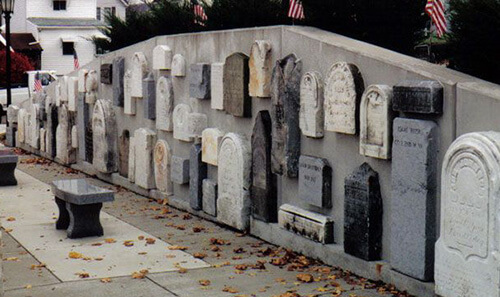Monuments and memorials serve as enduring tributes to commemorate individuals, events, or ideas. These terms are often used interchangeably, but they hold distinct meanings and purposes. Understanding the difference between a monument and a memorial is essential, as it sheds light on the unique roles they play in preserving history, culture, and remembrance.
Monument:
A monument is a structure, typically made of stone, metal, or other durable materials, that is created to honor a historical figure, event, or idea. Monuments are often erected to serve as a symbol of significance and to educate or remind people about a particular aspect of history. They are commonly used to celebrate achievements, leaders, and cultural heritage. Monuments can take various forms, including statues, plaques, obelisks, or architectural structures, and they are often placed in prominent locations within communities, cities, or parks.
Monuments, such as the Statue of Liberty in the United States, the Eiffel Tower in France, or the Pyramids of Egypt, are iconic examples that represent the enduring spirit of human achievement. These structures often draw attention and admiration for their architectural and artistic qualities, in addition to their historical and cultural significance.

Memorial:
A memorial, on the other hand, is a specific type of monument created to honor and remember individuals who have passed away or commemorate events that have left a profound impact on society. Memorials are deeply personal and emotional, serving as places of reflection, grief, and remembrance for those who visit. They are designed to pay tribute to the lives and sacrifices of individuals who have made a difference, especially in military conflicts, disasters, or other significant events.
Common forms of memorials include cenotaphs, tombstones, plaques, and statues that are dedicated to fallen soldiers, victims of natural disasters, or other specific individuals or groups. Memorials often incorporate inscriptions, names, and dates to ensure that the memory of those being honored is preserved for future generations.
Examples of well-known memorials include the Vietnam Veterans Memorial in the United States, the Australian War Memorial in Canberra, and the Hiroshima Peace Memorial in Japan. These memorials provide a solemn space for reflection, remembrance, and healing for those who have lost loved ones or who wish to honor the memory of those who have suffered.

Old California Cemetery
Key Differences
The primary differences between monuments and memorials can be summarized as follows:
- Purpose: Monuments are typically erected to commemorate historical figures, events, or ideas, while memorials are designed to honor and remember specific individuals or groups who have passed away or have been affected by significant events.
- Emotional Impact: Monuments tend to evoke a sense of pride, admiration, and historical awareness. Memorials, on the other hand, elicit emotions of grief, remembrance, and respect.
- Design: Monuments may feature grand architectural designs, intricate sculptures, or artistic elements that emphasize their historical or cultural significance. Memorials are often more understated and are focused on conveying a sense of reverence and reflection.
- Location: Monuments are commonly placed in prominent public spaces and are often tourist attractions. Memorials are frequently located in quieter, contemplative settings, such as cemeteries or dedicated memorial parks.
In summary, monuments and memorials play distinct roles in preserving history and memory. While monuments celebrate achievements and cultural heritage, memorials provide a space for reflection, remembrance, and healing, particularly in the face of loss and tragedy. Understanding these differences allows us to appreciate the unique significance of each in our collective and individual history. Both monuments and memorials serve as powerful reminders of the past and play a crucial role in shaping our understanding of the world and its people.
Similar articles:
What is the difference between flat and pillow grave markers?
How much is a cremation headstone?
What do you put on a Christian headstone?
Why is Black Granite More Expensive?
Beautiful Words to Memorialize a Life: Choosing Inscriptions for Headstones
